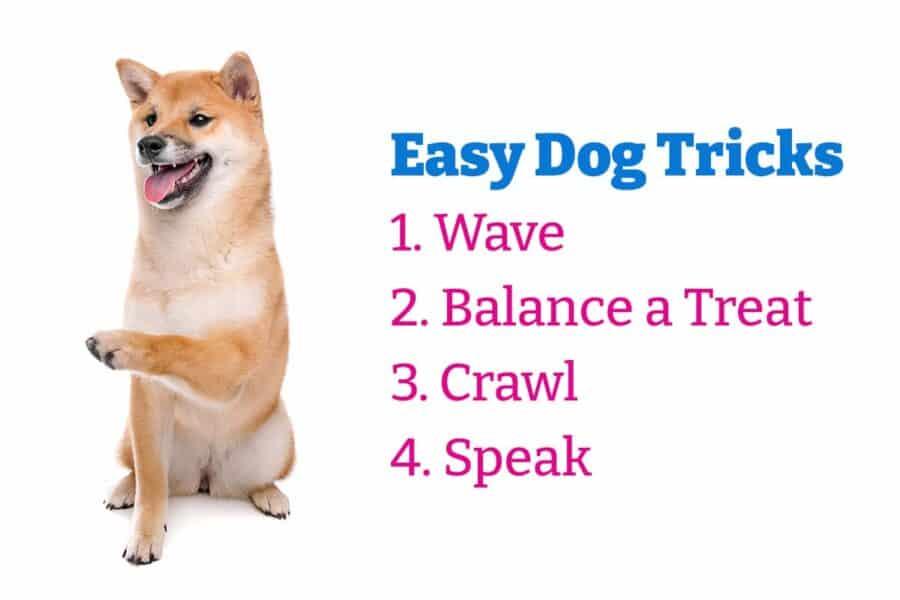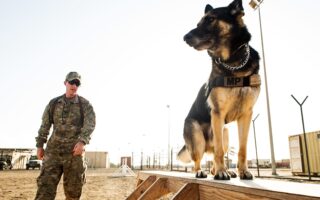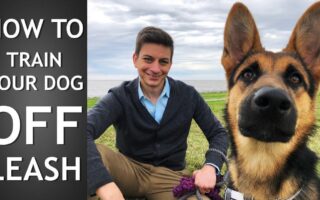Unleashing Fun: The Joy of Easy Dog Tricks
In a world where our furry friends often become cherished members of the family, there’s an undeniable joy in sharing special moments with them. Teaching your dog simple tricks not only strengthens the bond between you and your pet but also provides mental stimulation and a playful outlet for their boundless energy. From the classic “sit” to the charming “shake,” these easy dog tricks are perfect for pups of all ages and skill levels. Whether you’re a seasoned dog owner or a curious newcomer, this guide will embark you on a delightful journey into the art of dog training, demonstrating how a little patience and creativity can lead to hours of fun and engagement with your canine companion. Grab some treats, and let’s get started!
Table of Contents
- Getting Started with Dog Training Essentials
- Fun and Engaging Beginner Tricks for Your Pup
- Tips for Reinforcing Good Behavior During Training
- Common Mistakes to Avoid for Successful Learning
- Q&A
- Closing Remarks
Getting Started with Dog Training Essentials
Before diving into the fun world of teaching your dog easy tricks, it’s important to gather some essential tools for a successful training experience. Start with a few basic supplies that will make your sessions enjoyable and engaging for both you and your furry friend. Here’s what you need:
- High-Value Treats: Choose small, tasty rewards to keep your dog’s motivation high.
- Clicker: A clicker can be an effective tool for marking desired behaviors instantly.
- Leash: A leash can help maintain control, especially in distracting environments.
- Training Space: Designate a quiet area where your dog can concentrate without distractions.
Once you’ve got your essentials, it’s time to start practicing some easy tricks. Begin with foundational commands that build your dog’s confidence and understanding. Here’s a simple table of tricks to consider:
| Trick | Purpose |
|---|---|
| Sit | Establishes basic discipline and focus. |
| Shake Hands | Encourages social interaction and fun. |
| Roll Over | Enhances body coordination and playfulness. |
| Play Dead | Impresses family and friends with a crowd-pleaser. |
Fun and Engaging Beginner Tricks for Your Pup
Teaching your dog some entertaining tricks can be a delightful way to bond while keeping them mentally stimulated. Start with basic commands that lay the groundwork for more advanced moves. Simple tricks like shake, roll over, and play dead are not only amusing but also serve as great party tricks to show off to friends and family. Use positive reinforcement—like treats and praise—each time your pup successfully performs a trick. Here are a few beginner tricks you can try:
- Shake Hands: Encourage your dog to lift their paw by gently tapping it and rewarding them when they make contact.
- Roll Over: Use a treat to guide your dog into a lying position, then move the treat around their head to roll them over.
- Play Dead: Teach this by having your dog lie down, then gently encourage them to stay in position as you simulate a ‘shooting’ action with your hand.
To keep the training sessions engaging, mix in some fun variations. Incorporate props or toys to keep your pup interested, and consider timing their tricks with fun commands. For instance, you can add a twist to the basic tricks and create combinations, such as having your dog roll over followed by playing dead. Here’s a brief guide to the training process:
| Trick | Steps |
|---|---|
| Shake | Tap paw, reward when lifted. |
| Roll Over | Lead with a treat to rolling position. |
| Play Dead | Have them lie down, encourage staying still. |
Tips for Reinforcing Good Behavior During Training
Reinforcing good behavior during training is crucial for a smooth learning experience for both you and your dog. Positive reinforcement not only encourages your dog to repeat desired behaviors but also strengthens the bond between you. Here are some effective strategies to consider:
- Immediate Rewards: Always reward your dog immediately after they perform the desired action. This connection helps them understand what behavior is being reinforced.
- Variety of Treats: Use a variety of treats to keep training exciting. High-value treats, like small pieces of cheese or chicken, can be reserved for more difficult tricks, while regular kibble can be used for simpler tasks.
- Consistency: Maintain a consistent command for each behavior. This clarity allows your dog to learn faster and reduces confusion during training sessions.
Incorporating a structured approach can heighten the effectiveness of your training sessions. Try implementing these tips to create a conducive environment for learning:
| Tip | Description |
|---|---|
| Keep Sessions Short | Limit training sessions to 5-10 minutes to keep your dog engaged and prevent frustration. |
| Use Clicker Training | A clicker can help mark the exact moment your dog performs the desired action, making communication clearer. |
| End on a Positive Note | Wrap up each training session with a fun trick or a play session to leave your dog feeling accomplished. |
Common Mistakes to Avoid for Successful Learning
Engaging in training can be a rewarding experience for both you and your dog, but several common pitfalls can hinder your success. First and foremost, consistency is key. If you practice a trick sporadically or use different commands, your dog may become confused. Make sure everyone in the household uses the same cues and enforces the same rules. Additionally, setting realistic expectations is vital; not every dog will learn at the same pace. Be patient and adjust your teaching methods to align with your dog’s unique learning style and personality.
Another frequent mistake is the overuse of negative reinforcement. Instead of focusing on what your dog does wrong, celebrate their achievements, no matter how small. For instance, use treats and praise to motivate them during training sessions. Also, avoid lengthy training sessions that can lead to fatigue and frustration for both you and your dog. Short, enjoyable sessions—about 5 to 10 minutes—are usually more productive. Below is a quick reference for best practices to enhance your training effectiveness:
| Best Practice | Benefit |
|---|---|
| Consistent Cues | Minimizes confusion, helping your dog understand commands. |
| Positive Reinforcement | Encourages desired behavior through rewards. |
| Short Sessions | Keeps your dog engaged and reduces frustration. |
| Realistic Goals | Sets achievable milestones, promoting continued success. |
Q&A
Q&A: Easy Dog Tricks to Delight Your Pup
Q1: What are some easy tricks I can teach my dog as a beginner?
A: Teaching your dog tricks can be a fun bonding experience! Start with simple commands like “sit,” “shake,” and “lay down.” These tricks require minimal effort and allow your dog to understand basic obedience and cues. With patience and positive reinforcement, your furry friend will be showing off their new skills in no time!
Q2: How do I train my dog to “roll over”?
A: To teach your dog to roll over, start by having them lie down. Next, using a treat, gently guide their head to one side, encouraging them to follow the treat and roll onto their back. Once they roll over, reward them with praise and the treat. Repetition is key, so practice this trick regularly, and your dog will soon enjoy their acrobatic display!
Q3: Is there a proper way to reward my dog during training?
A: Great question! Positive reinforcement, such as verbal praise, treats, or even playtime, is essential when training your dog. Keep the rewards immediate and appropriate for the action – a soft ”good dog!” or a small treat can work wonders. The aim is to create a positive association with the trick, making your dog eager to perform again.
Q4: How long should a training session last?
A: Training sessions should be short and engaging! Aim for 5 to 10 minutes, especially for younger dogs or those with shorter attention spans. If you notice your dog losing interest, it’s best to take a break. Ending on a positive note can help maintain your dog’s enthusiasm for future training sessions.
Q5: Can older dogs learn tricks too?
A: Absolutely! While younger dogs may pick up tricks quickly, older dogs are more than capable of learning new skills. Teaching them tricks can provide mental stimulation and strengthen your bond. Always consider your dog’s physical abilities, and choose tricks that are suitable for their age and health.
Q6: What if my dog doesn’t seem to get the trick?
A: Every dog learns at their own pace, so it’s important to remain patient and flexible in your approach. If your dog struggles with a trick, try breaking it down into smaller steps or using different rewards or cues. Sometimes, switching up your training environment can help reduce distractions and enhance focus.
Q7: Do you have any tips for making training sessions more enjoyable?
A: Certainly! Incorporate playtime and excitement into your training routine. Use upbeat tones and make training feel like a game. Vary the tricks you practice to keep things fresh and interesting. Consider inviting friends or family to watch your dog’s progress—it can be incredibly rewarding for both you and your furry companion!
Q8: How can I ensure my dog remains motivated during training?
A: Keeping your dog motivated is key to successful training. Use high-value treats that your dog loves, and mix in their favorite toys for added excitement. Additionally, make training sessions interactive and fun. Allow for playtime between tricks, ensuring they associate learning with enjoyment.
Q9: Are there any common mistakes to avoid when training my dog?
A: Indeed! One common mistake is being inconsistent with commands. Always use the same word or gesture for each trick. Avoid punishment; instead, focus on positive reinforcement. Lastly, don’t forget to keep your training sessions short and fun to prevent burnout for both you and your dog.
Q10: How can I keep track of my dog’s progress in learning tricks?
A: Documenting your dog’s progress can be both rewarding and insightful. Consider keeping a training journal where you note their successes, challenges, and how they respond to different techniques. You can also take videos to capture milestones and celebrate their achievements. This way, you’ll have a delightful record of your puppy’s journey to stardom!
Closing Remarks
teaching your furry friend some easy dog tricks can be a rewarding experience for both you and your canine companion. Not only do these tricks provide mental stimulation and bonding time, but they also lay the foundation for better communication and obedience in your everyday interactions. Whether it’s a simple shake or an impressive roll-over, each trick mastered brings a sense of achievement and joy. So grab some treats, a bit of patience, and start your training journey today. After all, every wag of the tail and happy bark is a reminder that learning can be just as fun as it is beneficial. Happy training!



